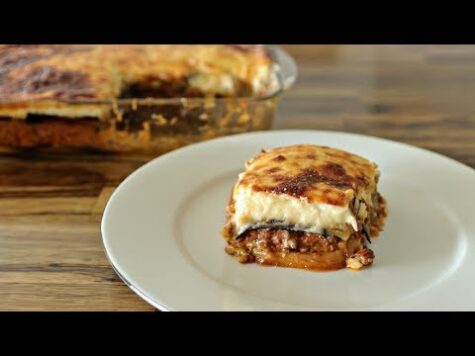This month, we’re doing a mini series on our podcast. Each of the Bon Appétit Test Kitchen editors will be sharing their top 10 cooking rules: the techniques they swear by, the ingredients they can’t live without, and the mindsets that keep them going. This week: the senior food editor who sprinkles a ton of herbs across all of his dishes, Andy Baraghani.
1. Group like tasks
This is all about organization and getting you set up properly in the kitchen. If you are making an apple pie, peel all the apples first, then slice them. Don’t peel and slice each one before moving on to the next. Doing it by task will make you become a faster, more efficient cook.
2. When it comes to dairy, go full fat. Period.
There’s a reason we always say this to our readers and viewers, but I still feel like a lot of people are buying the 1 percent, 2 percent, or non-fat versions of things like yogurt, milk, and cottage cheese. There is just no replacement for full-fat dairy, as the versions with a lower amount will lack flavor and have a chalky texture.
3. Skip boxed or canned stock when making soups, braises, or stews
At this point, I’ve actually stopped calling for stock in any of my recipes. If you’re not making it yourself (or buying a really, really good version from somewhere you trust, like a butcher shop), it just doesn’t taste good. Water that you’ve doctored up yourself does the trick perfectly.
4. Know your oils
Extra virgin olive oil can be robust and peppery, other times fruity and smooth. Nut and seed oils are generally quite forward and usually are best to finish foods with. Neutral oils, like canola, vegetable, sunflower, and peanut have little to no flavor.
You better believe those green beans were blanched in heavily salted water.
Photo by Alex Lau, food styling by Rebecca Jurkevich, prop styling by Kalen Kaminski5. Blanch or boil vegetables in heavily salted water
I do ¼ cup Diamond Crystal kosher salt to 2 quarts water. You’ll not only bring out the the flavor of the vegetable, but you’ll enhance the color, too.
6. Please grate all cheese yourself
Yes, pre-shredded cheeses are convenient, but they often lack flavor. Plus, stabilizers are often added to keep the cheese from clumping together. But there is one exception: grated Parm from a good-quality market, since it was probably grated that day!
7. Two acids are better than one
Vinegar on its own can be abrasive, but combine it with some citrus juice or zest, and they balance each other out. What’s more, you shouldn’t be thinking of acid as only those two things. Yogurt, buttermilk, and tamarind all will add acid to your dressing, your braise—anything! Get those in the mix, too.
8. Add hard herbs early; save tender herbs for the end
Using harder herbs (bay leaves, thyme, rosemary, sage) early in the cooking process will infuse the dish with the help of the heat. Softer, tender herbs (parsley, cilantro, basil) should be added toward the very end so that they stay raw and bright. While there are sometimes exceptions, that’s pretty much the rule.




